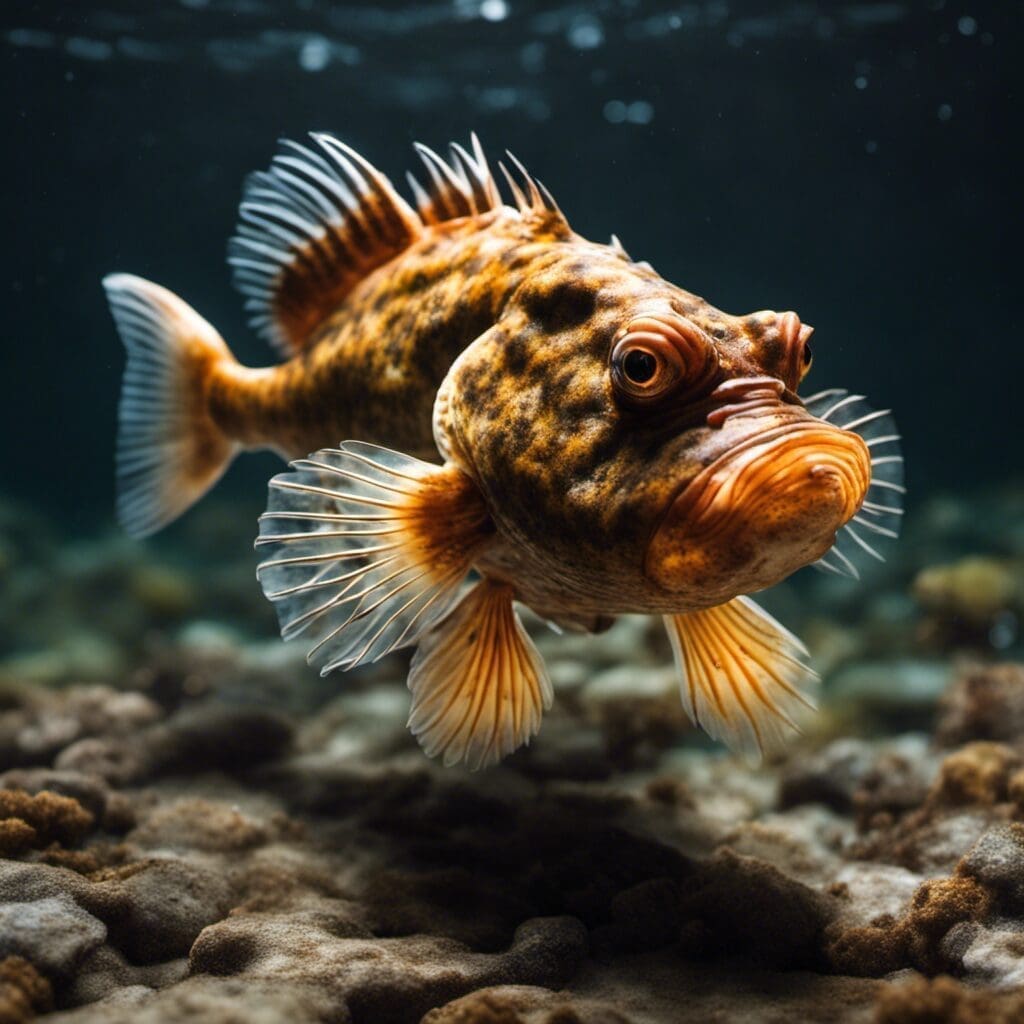Introduction
The Buffalo Sculpin, scientifically known as Enophrys bison, belongs to the family of Cottidae. This species of fish is named for its resemblance to a buffalo, particularly in terms of its distinctive flaring spines.
Conservation Status
The current status of the Buffalo Sculpin is Least Concern (LC), according to the International Union for Conservation of Nature (IUCN). Conservation efforts specifically for Buffalo Sculpin are not defined, but marine conservation efforts in general help to protect their habitat.
Statistics
| Attribute | Average | Range |
|---|---|---|
| Length | 20 cm | 15-25 cm |
| Weight | Not specified | Not specified |
| Lifespan | 4-6 years |
Distribution
Buffalo Sculpin are primarily distributed along the North pacific, from Alaska to Baja, Mexico. They do not demonstrate significant migration patterns.
Habitats
Buffalo Sculpin inhabit a range of water habitats, including saltwater, brackish, and freshwater systems. They generally prefer a depth range between 0 and 46 metres, and a temperature range of 0-26°C.
When and Where to See
Buffalo Sculpin can be observed throughout the year but are more active during warmer months. They are visible during both day and night.
Best Fishing Locations
Due to their widespread distribution, Buffalo Sculpin can be found at numerous North Pacific fishing locations. However, prime spots include:
1. Kodiak Island, Alaska
2. The Puget Sound, Washington
3. Monterey Bay, California
4. San Juan Islands, Washington
5. Baja California, Mexico
How to Catch
Buffalo Sculpin are versatile and can be caught using a variety of bait, including worms and small crustaceans. Fly fishing, trolling, and bottom fishing techniques can be effective. The best time of day to catch Buffalo Sculpin is during early morning and late afternoon.
Identification Guide
Buffalo Sculpin can be distinguished by their large flattened heads, flaring spines, and ridged eyes. Their color ranges from brown to green with various mottling.
Culinary
While not regularly eaten, Buffalo Sculpin can be used in various seafood dishes. The fish’s taste is delicate and light. However, care must be taken due to the presence of potentially venomous spines.
Additional Information
Buffalo Sculpin are typically bottom-dwellers and feed on a range of small invertebrates. They are preyed upon by larger fish and marine mammals. Despite their low conservation status, habitat destruction and pollution pose threats to their population.
References and Further Reading
For more information on the Buffalo Sculpin, please refer to these sources:
1. Fishbase
2. Monterey Bay Aquarium
3. Encyclopedia of Life
4. IUCN Red List

